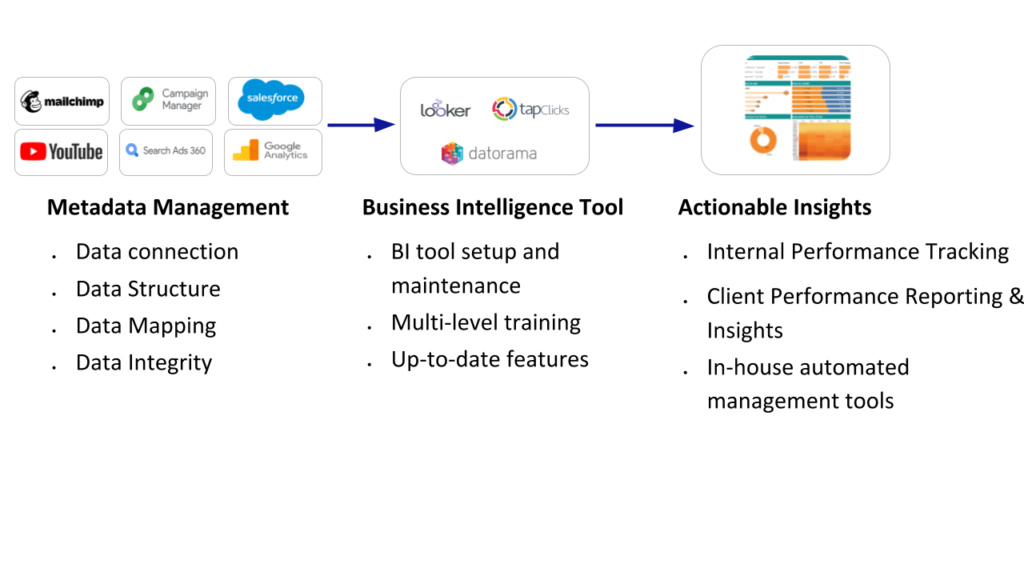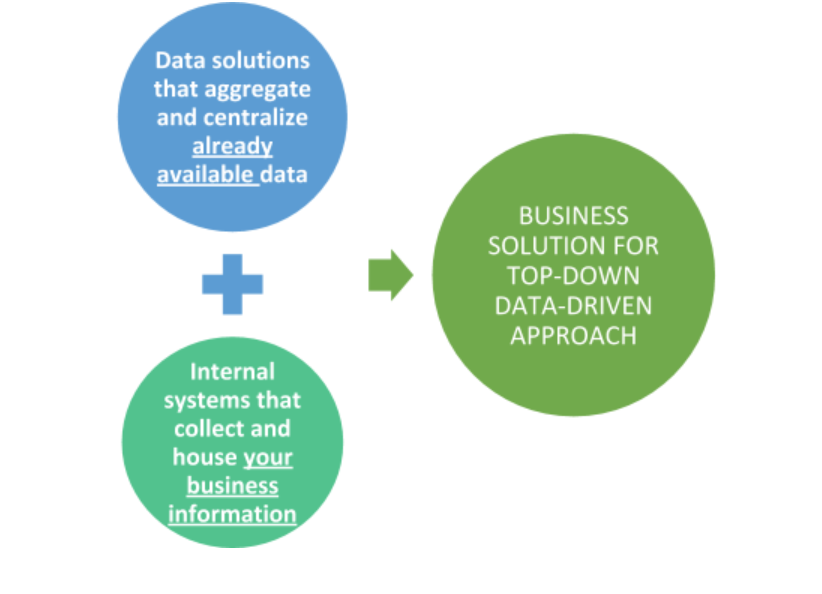In the past few years, the term “data-driven” has become so ubiquitous that it is not uncommon to hear it every day. With the exponential growth of computing power, the ever-increasing capacity of cloud databases and the constant improvements and capabilities of business intelligence tools, having a data-driven business has never seemed easier. However, one quick Google search for “data-driven solutions” results in a variety of options and the process can easily start to feel overwhelming. Is there a way to identify the best fitting data-driven solution immediately? Unfortunately, the answer is no. Building a data-driven culture for your organization takes determination and hard work — there is no way around that. But having a comprehensive approach and strategy can make getting to the end goal a little bit easier.
So, where do you start?
First, you have to figure out what your end goal is as a business. What does it mean for your business to truly be data-driven? What does that really mean? Who or what will be driven by data? From our experience working with hundreds of brands and a number of marketing agencies, being data-driven typically means one or all of the following:
- The ability to bring all of the data sources into one place and have a full picture of how marketing channels impact sales and brand awareness.
- The ability to provide reporting to clients at any time using a live dashboard
- The ability to use visualizations like charts and graphs to provide insights on performance or optimizations quickly.
This approach is the bottom-up approach, meaning it starts with addressing the pain points that a team has to deal with daily, such as manual data download and aggregation, reporting creation and updates, etc. A typical process for the bottom-up approach is shown below:

Pushing a data-driven practice from the bottom up is an excellent strategy and often produces immediate results — hours saved, happier clients and a happier team. However, you cannot call your organization data-driven if you just stop there.
A truly data-driven organization uses data to drive their decision-making processes and operations from both the bottom-up and the top-down. What that means is, in addition to your team being able to gain value from data (bottom-up), the organization leader will be able to do the same. There should be easily accessible solutions that help answer some of these questions instantly:
- What is your company’s profitability?
- What is the profitability of each of your clients?
- What is the profitability of each department or branch?
- How are you serving clients? Reaching to KPI or not?
- What is an employee’s workload and performance?
- Are employees spending their time on what is most important to driving sales and revenue?
In most cases, business owners or leaders wait long durations to obtain this data and risk making ineffective decisions based on outdated data.
So here comes the question: While there are countless tools in the market that help with a bottom-up approach, why are the tools that are effective in getting answers for the executive level seem scarce?
Here's the answer: every business is unique and needs its own unique data treatment. A solution that helps with a top-down data-driven approach needs to be a data solution, but more importantly, a business solution. It means data will need to be collected and structured to answer a specific business’ questions, not a one-size-fits-all approach. Basically, that business solution will be built from two main sources of data:

The first source can be built or supported by many data solutions. However, the second source requires a lot of listening and understanding of the business, and not just business goals and objectives, but how the business operates and how your team works together. It requires strategic discussions, collaboration and consensus from everyone within the organization. Data is easy but people and processes are often much more complicated. Building out a top-down strategy to reach solutions can uncover hidden conflicts and bottlenecks that the executives of the company might not be aware of.
Building a business solution using the top-down approach will require a lot more work than finding a solution for implementing the bottom-up approach. But with the right expertise, the right heart and the patience to truly understand what works (or doesn’t work) for your business, it can be done. And once it’s done, the impact is immense.
Get started today and build a truly data-driven and effective business for your future
